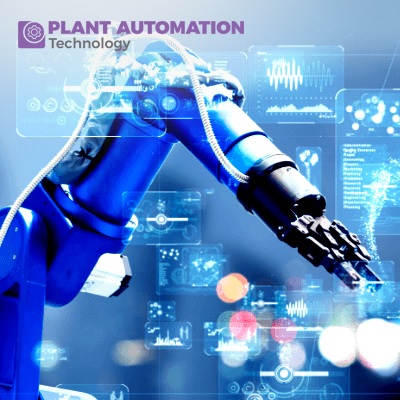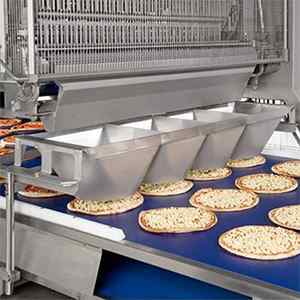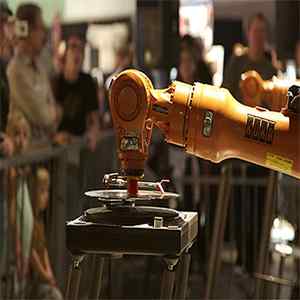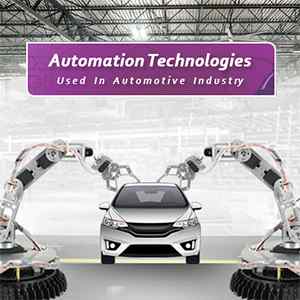Leveraging Big Data and Analytics in Automated Manufacturing

Introduction
The manufacturing industry has always been at the forefront of technological innovation. From the steam engine to the assembly line, advancements in technology have continually reshaped manufacturing processes. Today, we are in the midst of a new revolution—one driven by big data and analytics. The integration of these technologies into automated manufacturing systems is transforming how factories operate, making them more efficient, productive, and responsive to market demands.
Understanding Big Data and Analytics
Big Data refers to the vast volumes of data generated every second from various sources such as sensors, machines, and human inputs. This data is characterized by its volume, velocity, variety, and veracity. In the context of manufacturing, big data can include everything from machine performance metrics to supply chain information and customer feedback.
Analytics involves the use of statistical and computational techniques to analyze data and derive meaningful insights. This can range from simple descriptive statistics to complex predictive models and machine learning algorithms.
The Role of Big Data in Automated Manufacturing
In automated manufacturing, big data plays a crucial role in several key areas. Predictive maintenance is one such area, where continuous monitoring of machine performance data allows manufacturers to predict potential failures and perform maintenance before a breakdown occurs, thus reducing downtime and increasing productivity. Another important aspect is quality control; data from sensors can be used to monitor product quality in real-time. Advanced analytics can detect patterns and anomalies that indicate defects, allowing for immediate corrective actions.
Supply chain optimization is another vital application. Big data provides insights into supply chain operations, helping manufacturers optimize inventory levels, reduce lead times, and improve supplier performance. Production planning also benefits significantly from big data. By analyzing historical production data, manufacturers can forecast demand and adjust production schedules accordingly, ensuring that resources are used efficiently and customer demands are met.
Benefits of Leveraging Big Data and Analytics
The integration of big data and analytics in automated manufacturing offers numerous benefits. One of the most significant advantages is increased efficiency. Real-time data allows for better decision-making and more efficient use of resources. For example, predictive maintenance can prevent unexpected machine failures, while optimized production schedules can reduce idle times.
Improved quality is another major benefit. Continuous monitoring and analysis of production processes ensure that quality standards are maintained. Any deviations can be quickly identified and addressed, leading to fewer defects and higher customer satisfaction. Cost reduction is also a significant advantage. By optimizing operations and reducing waste, manufacturers can significantly lower their costs. Predictive maintenance reduces repair costs, while supply chain optimization minimizes inventory holding costs.
Furthermore, leveraging big data and analytics provides greater flexibility. With real-time insights, manufacturers can quickly respond to changes in market demand or production conditions. This agility is crucial in today's fast-paced business environment. Enhanced innovation is another key benefit. Big data provides valuable insights that can drive innovation, helping manufacturers identify new opportunities for product development, process improvements, and business strategies.
Challenges in Implementing Big Data and Analytics
Despite the clear benefits, implementing big data and analytics in automated manufacturing is not without its challenges. Data integration is a significant hurdle. Manufacturing environments often involve a wide range of machines and systems, each generating data in different formats. Integrating this data into a cohesive system can be complex and time-consuming.
Data quality is another critical issue. The effectiveness of analytics depends on the quality of the data being analyzed. Inaccurate or incomplete data can lead to incorrect insights and poor decision-making. Skill gaps also pose a challenge. Implementing and managing big data and analytics require specialized skills, and manufacturers may need to invest in training or hiring data scientists and analysts.
Cost is a significant consideration as well. The initial investment in big data infrastructure and analytics tools can be substantial. However, the long-term benefits often justify the expense. Security and privacy are also crucial concerns. With the increasing amount of data being collected, ensuring its security and privacy is paramount. Manufacturers must implement robust cybersecurity measures to protect sensitive information.
Key Technologies in Big Data and Analytics for Manufacturing
Several key technologies are driving the adoption of big data and analytics in manufacturing. The Industrial Internet of Things (IIoT) involves the use of interconnected sensors and devices that collect and transmit data in real-time. This data can be analyzed to optimize manufacturing processes and improve efficiency. Machine learning and artificial intelligence (AI) are also crucial, enabling advanced analytics such as predictive maintenance and quality control. Machine learning algorithms can identify patterns and trends in data, providing valuable insights for decision-making.
Cloud computing provides scalable and cost-effective solutions for storing and processing large volumes of data, facilitating real-time data access and collaboration. Edge computing, which involves processing data at the edge of the network closer to where it is generated, reduces latency and allows for faster decision-making. Digital twins, virtual replicas of physical systems, are another important technology. By simulating real-world processes, digital twins can provide insights into performance, predict potential issues, and optimize operations.
Case Studies: Success Stories in Automated Manufacturing
Several companies have successfully leveraged big data and analytics in their manufacturing operations.
- General Electric (GE) has implemented predictive analytics across its manufacturing operations, reducing unplanned downtime by up to 20% and maintenance costs by up to 10%.
- Siemens' Amberg plant in Germany is another example of a smart factory. The plant uses IIoT and big data analytics to monitor production processes in real-time, resulting in a defect rate of less than 0.001%.
- Bosch has also leveraged big data and AI to optimize its manufacturing processes, using predictive maintenance to reduce machine downtime and improve overall equipment effectiveness.
Future Trends and Developments
The future of big data and analytics in automated manufacturing looks promising, with several emerging trends and developments. AI-powered automation is one such trend. The integration of AI with automation will enable more intelligent and autonomous manufacturing systems, enhancing decision-making, optimizing processes, and driving innovation.
The rollout of 5G networks will provide faster and more reliable connectivity, facilitating real-time data transfer and analysis. This will enhance the capabilities of IIoT and edge computing. Advanced robotics is another exciting development. Robotics technology is evolving rapidly, with advancements in AI and machine learning making future robots more flexible, adaptive, and capable of performing complex tasks.
Sustainability is becoming increasingly important in manufacturing. Big data and analytics can play a crucial role in promoting sustainability by optimizing resource usage and reducing waste. Human-machine collaboration is another key trend. The future will see greater collaboration between humans and machines, with advanced analytics providing workers with real-time insights and recommendations, enhancing their decision-making and productivity.
Conclusion
Leveraging big data and analytics in automated manufacturing is revolutionizing the industry. By harnessing the power of data, manufacturers can improve efficiency, quality, and flexibility while reducing costs. Despite the challenges, the benefits are substantial, and the future holds even greater potential with advancements in AI, IIoT, and other technologies. As manufacturers continue to embrace these innovations, they will be better positioned to thrive in an increasingly competitive and dynamic market.











